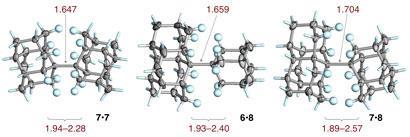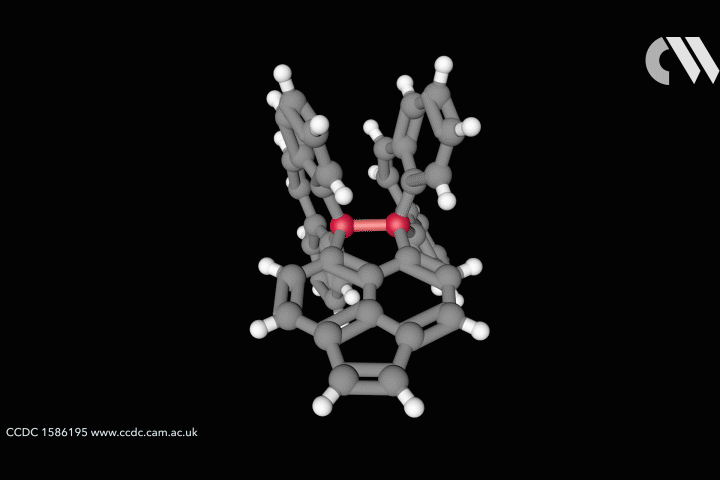Balancing attractive and repulsive forces allowed chemists to make longer C-C bonds than ever seen before
Chemists have created an alkane containing the longest C-C bond yet seen. The feat was achieved by subtly balancing forces of attraction and repulsion in a carefully designed molecule based on carbon configured in a diamond-like structure. The study demonstrates the importance of weakly attractive intramolecular forces and how they can be harnessed to introduce particular features into molecules.
In a covalent bond the forces of charge repulsion balance the forces of attraction. ’To make the bond longer you need to increase the repulsion,’ says Peter Schreiner, of Justus Liebig University in Germany, who led the study. In an alkane, one way to increase the bond length between two carbons is to replace hydrogens with methyl groups. The greater electron density will cause greater repulsion and stretch the bond. However, before long the molecule will simply fall apart as the bonds become excessively stretched.

Schreiner’s team, which included colleagues from Kiev Polytechnic Institute in Ukraine and Stanford University in the US, reasoned that it might be possible to maintain a stable long C-C bond by counteracting the repulsive forces caused by adjacent electron densities with weakly attractive van der Waals forces, specifically those that can arise between neighbouring hydrogen atoms.
The researchers constructed dumbell-shaped molecules consisting of a central C-C ’bar’ on each end of which were three-dimensional diamond-like alkanes, or ’diamondoids’. Crucially, the outer surfaces of these diamondoids are capped by hydrogens. The repulsive forces of each diamondoid on either side of the central C-C bridge are sufficient to stretch the bond to more than 1.7Å, compared with a typical alkane C-C bond of around 1.5Å, an atomically significant increase. However, the van der Waals attraction between the hydrogens on either side of the central bond is sufficient to hold the molecule together. Indeed, it is a highly stable solid.
’What we have shown is that it is possible to balance intramolecular forces to create strong and stable bonds that are extremely long,’ says Schreiner. ’People usually sweep these weak interactions under the carpet. The tendency is to think they are not relevant, but no one knew how strong they can be if they are aligned properly.’
Stefan Grimme, a theoretical organic chemist at the University of Munster in Germany, says that the new work is important ’because it gives experimental evidence for the renewed interest in van der Waals - also called dispersion - forces over about the last five years. One main point is that chemists use the fundamental, textbook term "steric interactions" or "steric strain" mostly in a negative, repulsive form. However, beside repulsion the steric term also contains the always attractive van der Waals interactions, and this has been overlooked.’
References
P R Schreiner 10.1038/nature10367)







No comments yet